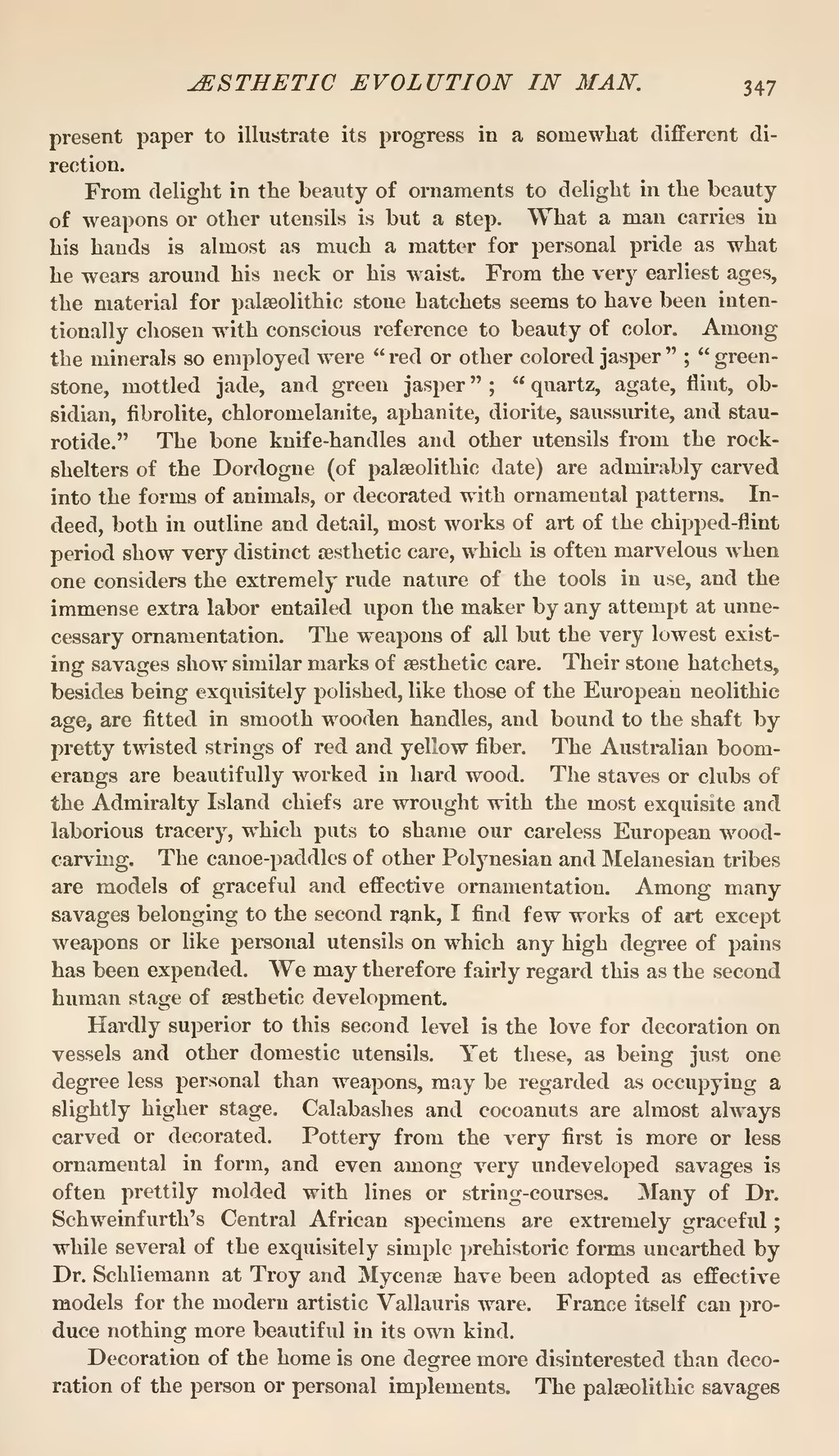present paper to illustrate its progress in a somewhat different direction.
From delight in the beauty of ornaments to delight in the beauty of weapons or other utensils is but a step. What a man carries in his hands is almost as much a matter for personal pride as what he wears around his neck or his waist. From the very earliest ages, the material for palæolithic stone hatchets seems to have been intentionally chosen with conscious reference to beauty of color. Among the minerals so employed were "red or other colored jasper"; "greenstone, mottled jade, and green jasper"; "quartz, agate, flint, obsidian, fibrolite, chloromelanite, aphanite, diorite, saussurite, and staurotide." The bone knife-handles and other utensils from the rock shelters of the Dordogne (of palæolithic date) are admirably carved into the forms of animals, or decorated with ornamental patterns. Indeed, both in outline and detail, most works of art of the chipped-flint period show very distinct æsthetic care, which is often marvelous when one considers the extremely rude nature of the tools in use, and the immense extra labor entailed upon the maker by any attempt at unnecessary ornamentation. The weapons of all but the very lowest existing savages show similar marks of æsthetic care. Their stone hatchets, besides being exquisitely polished, like those of the European neolithic age, are fitted in smooth wooden handles, and bound to the shaft by pretty twisted strings of red and yellow fiber. The Australian boomerangs are beautifully worked in hard wood. The staves or clubs of the Admiralty Island chiefs are wrought with the most exquisite and laborious tracery, which puts to shame our careless European woodcarving. The canoe-paddles of other Polynesian and Melanesian tribes are models of graceful and effective ornamentation. Among many savages belonging to the second rank, I find few works of art except weapons or like personal utensils on which any high degree of pains has been expended. We may therefore fairly regard this as the second human stage of aesthetic development.
Hardly superior to this second level is the love for decoration on vessels and other domestic utensils. Yet these, as being just one degree less personal than weapons, may be regarded as occupying a slightly higher stage. Calabashes and cocoanuts are almost always carved or decorated. Pottery from the very first is more or less ornamental in form, and even among very undeveloped savages is often prettily molded with lines or string-courses. Many of Dr. Schweinfurth's Central African specimens are extremely graceful; while several of the exquisitely simple prehistoric forms unearthed by Dr. Schliemann at Troy and Mycenae have been adopted as effective models for the modern artistic Vallauris ware. France itself can produce nothing more beautiful in its own kind.
Decoration of the home is one degree more disinterested than decoration of the person or personal implements. The palæolithic savages
